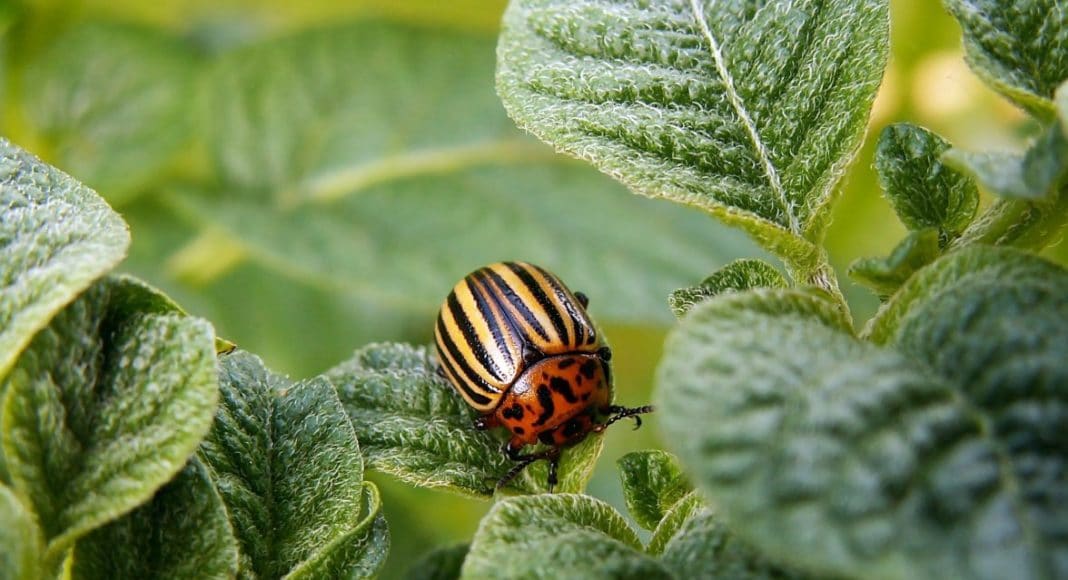A new study from a University of Maryland-led team of researchers confirms the long held idea that the Colorado potato beetle, by far the most damaging insect to the U.S. — and Canadian — potato industry, originated in the Great Plains region of the United States. The findings dispel more recent theories that this beetle may have come from Mexico or other divergent populations.
These findings shed new light on the origin of a pest with a unique ability to adapt to pesticides almost faster than the industry can keep up. The beetle is consistently a major issue for potato farmers in North America and Europe. By determining the origins of this pest and better understanding its genetic makeup, this new investigative evolutionary biology work could advance efforts to develop better pest management strategies that combat the potato beetle’s pesticide resistance abilities, and thus benefit the potato industry and its consumers.
“With this study, we were trying to gain insight into two major questions: Where did the potato beetle come from? And why do they evolve resistance so quickly?” said lead author David Hawthorne, Ph.D., associate professor in the entomology department at the University of Maryland. “This would have major implications in controlling the pest, since the more growers have to spray, the greater their costs and risk to the surrounding environment. We need a strategy to weigh our options and determine the best way to control these pests without overspraying, or even torching entire fields overrun with beetles, which has happened in the past when there has been no effective pesticide options.”
Hawthorne and his team found that the populations of beetles that eat potatoes are most closely related to nightshade eaters in the Plains states. Beetles from Mexico, a possible source of the pest populations, are too distantly related. “Before they became pests, the Plains beetles first evolved a taste for potatoes,” says Hawthorne. “Some non-pest populations still don’t eat them and will prefer the weeds surrounding the potatoes, but not the potatoes themselves. This is just one way that populations may differ.”
Hawthorne and colleagues say that by understanding the distinctions between these populations and which beetles are the source of current pest populations, more targeted pest management strategies can be developed based on the specific genetic makeup of the beetles, leading to more effective pest management and less spraying. Their findings were recently published in the Journal of Economic Entomology.
By comparing the genetics of pre-agriculture potato beetles — before the pest began to consume potatoes — to post-agriculture potato beetles, Hawthorne and his team seek to understand why and how the beetle is developing resistance so quickly, and what can be done to slow resistance.
“The Colorado potato beetle is almost always one of the first insects to develop resistance to any pesticide. In fact, many contribute the entire pesticide arms race and development of pesticides to this particular beetle, which can destroy entire fields very easily,” says Hawthorne.
Hawthorne describes this work as almost forensic biology, tracking the evolution and movement of this beetle across time and geography. “I like that this work is very interdisciplinary,” says Hawthorne. “It is about taking all the puzzle pieces and trying to put the whole story together to have the biggest impact on the field. Ultimately, this work is a major step towards understanding one of the most harmful pests, and has significant implications in controlling the population, keeping the potato industry stable, and fighting pesticide resistance and overspraying.”
Source: University of Maryland











